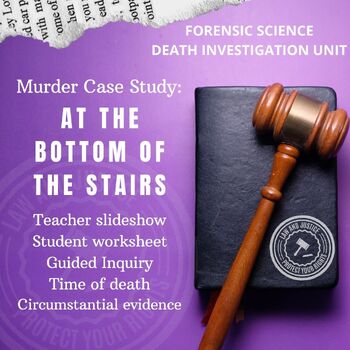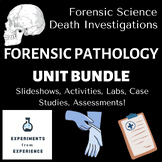Forensic Science True Crime Case: Teacher Slideshow & Guided Student Task BUNDLE
- Google Docs™

Products in this Bundle (2)
Also included in
- Estimating the Post Mortem Interval, estimating time of death, and learning the roles of the Medical Examiner, this unit will help your students engage in the field of Forensic Science. If you are struggling to create a creative, engaging unit about Death Investigations and Forensic Pathology, lookPrice $34.99Original Price $37.23Save $2.24
- True crime is a creative and exciting way to teach scientific principles in your science classes! If you teach Forensic Science and are looking for some major cases involving forensic science, these are the perfect addition to your class! Murder, death investigations, blood spatter, stomach contentsPrice $24.99Original Price $26.73Save $1.74
Description
This Forensic Science true crime case study involves the shocking murder of a mother in small town western Massachusetts. I teach this case during my unit on Death Investigations and Forensic Pathology. This case marked the first time in state history that a woman had been on trial for killing her lawfully wedded wife. But did she do it?
This case study includes a teacher slideshow presentation and accompanying guided student worksheet, which introduces this engaging case study on a mysterious murder in a small town in Western Massachusetts in 2010. It is based on the gruesome details of the murder of Annamarie Cochrane Rintala and the circumstances surrounding her death and the trials that followed. This case includes an engaging storyline, where students have to use their knowledge to estimate time of death, manner and cause of death. Then, as the story unfolds, students will look at the circumstantial evidence surrounding the case and finally try to answer the tough question: "Has justice been served?"
In this thought-provoking, real-world example of crime and how the justice system tries to seek justice for all, students will apply their knowledge from the death investigation unit. Alternatively, this could be assigned during a crime scene unit or towards the end of the year for any forensic science course.




